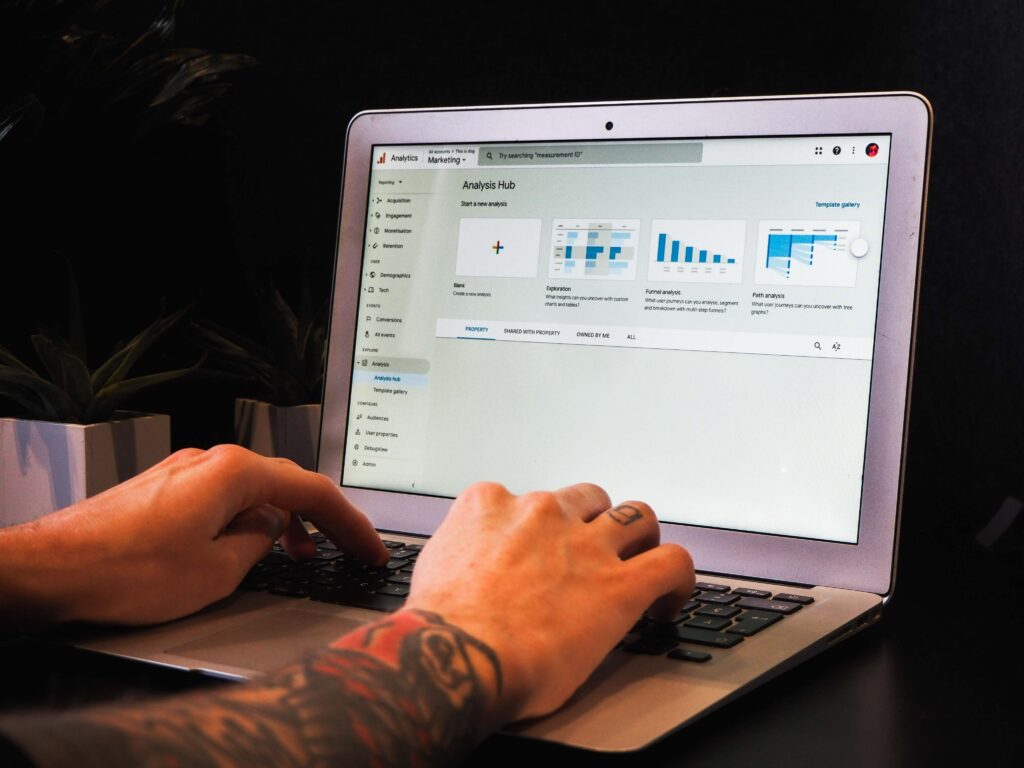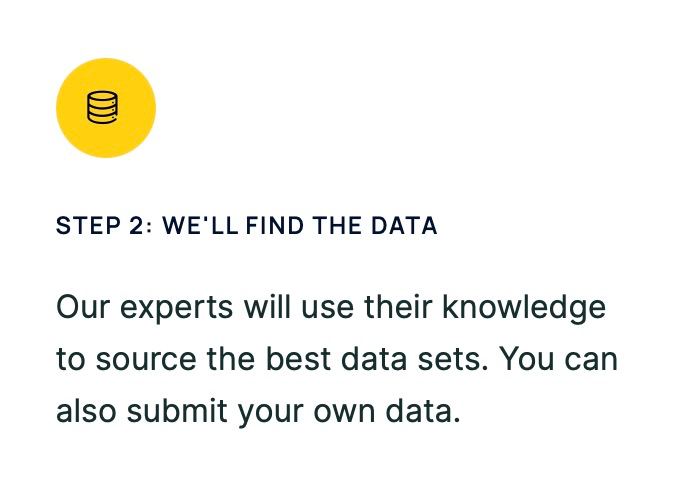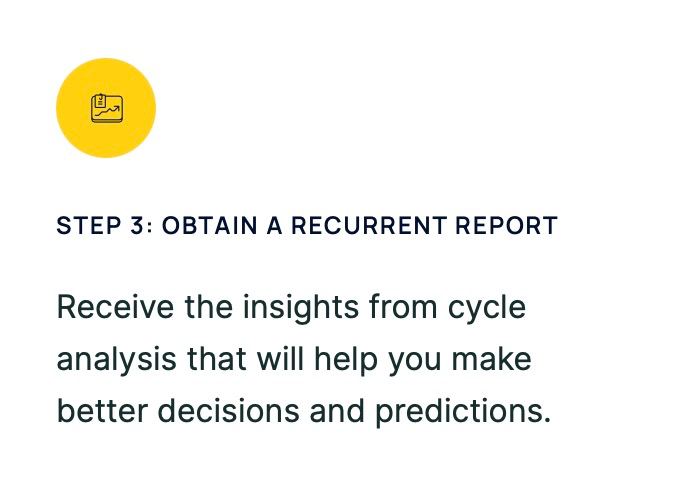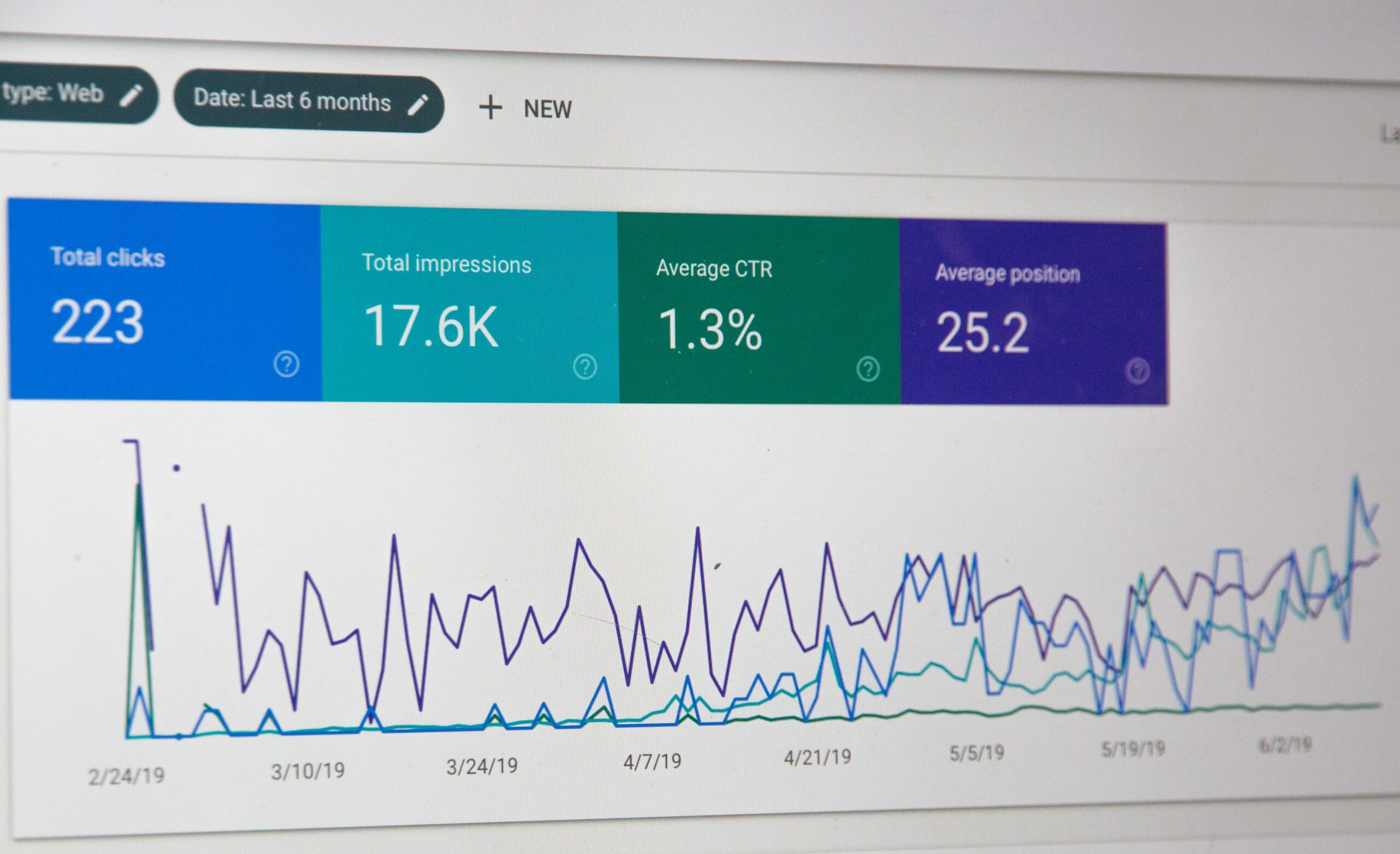In the dynamic world of digital marketing, staying ahead of the curve is the key to success. How, you ask? The answer lies in harnessing the power of web traffic prediction.
Welcome to Cycle Quest, your trusted partner in decoding the mysteries of cyclical analysis and empowering your marketing strategies. You can read today’s article to understand what you can expect from us or jump directly to a real-life example.
Let’s dive into the world where data drives decisions and predictions shape the future!
Cyclical analysis serves as an essential tool for understanding and predicting web traffic trends. This analysis empowers businesses to make data-driven decisions that optimize their marketing efforts, tailoring strategies to align with peak user activity periods. Understanding patterns in web traffic allows for the effective evaluation of various marketing channels, shaping promotional campaigns for maximum impact.
Incorporating time series forecasting into marketing plans offers a competitive edge to businesses. It allows managers to anticipate future trends, identify potential issues, and take proactive measures. The ability to foresee high traffic periods enables the strategic timing of new product launches or special discounts, increasing visitor numbers and boosting conversion rates.
Cycle Quest is here to help businesses navigate the complex world of web traffic prediction. With a tailored 3-step service, they offer comprehensive solutions to your unique needs. Their experts handle everything from data sourcing to analysis and reporting, providing not only insights into current web traffic patterns but also accurate forecasts of future trends. Harness the power of cyclical analysis and transform your digital marketing strategy. Don’t wait – contact Cycle Quest today and shape your future in the digital landscape!
Table of Contents
What is Google Analytics?

Google Analytics is a powerful tool that allows businesses to gain valuable insights into their website’s performance and visitor behavior. With its comprehensive range of features and data analysis capabilities, Google Analytics provides crucial information about website traffic, user engagement, and conversion rates.
By tracking and measuring various metrics such as bounce rate, traffic sources, and session duration, businesses can make informed decisions about their marketing strategies and improve their overall online presence.
With Google Analytics, businesses can gain a deeper understanding of their audience, identify the most effective marketing channels, and optimize their website to drive more traffic and conversions. Whether you’re a marketing manager, business owner, or digital strategist, utilizing Google Analytics can provide you with the insights needed to shape your future web traffic and enhance your digital marketing efforts.
The Benefits of Using Google Analytics to Predict Web Traffic
Google Analytics is an invaluable tool for predicting web traffic and understanding website performance. With its ability to analyze website traffic, track data metrics, and provide comparative analysis, it offers numerous benefits to businesses and website owners.
By using Google Analytics, you can gain insights into your website’s traffic sources, whether it’s organic search traffic, direct traffic, or referral traffic. This information is crucial for understanding how users are finding your website and which channels are driving the most traffic. Armed with this knowledge, you can optimize your marketing strategy using predictive algorithms and allocate resources to the most effective channels.
One of the key benefits of Google Analytics is its ability to compare traffic data over different time periods. You can easily analyze trends and patterns by comparing day-to-day, week-to-week, and even year-to-year performance, which can be part of a website traffic prediction algorithm. This allows you to identify seasonal variations, spot emerging trends, and make informed decisions about your digital marketing efforts.
With Google Analytics, you can also track important metrics such as bounce rate, average session duration, and conversion rate. These metrics help you gauge user engagement and determine the effectiveness of your website and marketing campaigns. By monitoring these metrics over time, you can identify areas for improvement and track the success of your strategies, ultimately leading to better results.
Google Analytics provides powerful insights into web traffic and allows you to make data-driven decisions. Its ability to analyze website traffic, track data metrics, and provide comparative analysis makes it an invaluable tool for predicting and optimizing web traffic.
Understanding the Different Types of Traffic Sources

In order to effectively predict web traffic from Google Analytics, it is crucial to understand the different types of traffic sources that drive users to your website. By identifying and analyzing these sources, you can gain valuable insights into the effectiveness of your marketing efforts and make informed decisions to optimize your strategies. Let’s explore the various types of traffic sources and their significance.
Understanding the different types of traffic sources in Google Analytics is instrumental in predicting future web traffic. By dissecting the data from organic search, direct, referral, and social traffic, you can gain insights into the effectiveness of your marketing channels, identify areas for improvement, and allocate resources where they will yield the highest returns. With a clear understanding of your traffic sources, you can make data-driven decisions to optimize your marketing strategies and drive increased engagement and conversions on your website.
Organic Search Traffic
Organic search traffic is a game-changer when it comes to measuring SEO performance and understanding the popularity of your website in search results. By tracking this type of traffic, you can gain valuable insights into what attracts visitors and how they find specific information, products, or services on your website.
When users click on organic search links, it indicates that your website’s content has met their search query and attracted their attention. This is a fantastic opportunity for your website to shine and provide valuable content. By analyzing organic search traffic, you can identify which pages are ranking well and capturing the interest of your target audience.
Understanding visitor behavior through organic search traffic allows you to optimize your website’s content further. You can tailor your offerings to match their search queries and ensure your website provides what they need. By monitoring the performance of specific keywords in driving organic search traffic, you can refine your SEO strategy to better reach your target audience.
So, don’t underestimate the power of organic search traffic. It’s not just about attracting visitors; it’s about attracting the right visitors who are actively seeking what your website has to offer. By leveraging the insights provided by this traffic source, you can optimize your content and improve your website’s visibility in search results.
Direct Traffic
Direct traffic refers to web visitors who arrive on a site by directly typing the URL into their browser or using a bookmark. It is a valuable source of traffic as it represents individuals who are already familiar with your website and have chosen to come back to it without the need for search engine assistance.
In Google Analytics, direct traffic is not limited to visitors who directly type in the URL. It also includes traffic whose source cannot be determined by Google Analytics. This could be due to a variety of reasons, such as referral sources not being properly tagged or links from emails not being trackable.
Understanding the nuances of direct traffic is crucial for accurately analyzing and interpreting your website’s traffic sources. By identifying the portion of traffic that is direct, you can gain insights into the loyalty and familiarity that users have with your brand. This knowledge can help you gauge the effectiveness of your marketing efforts and website usability.
To enhance your understanding of direct traffic, regularly monitor and analyze the data in Google Analytics. Keep an eye on the number of direct visits and assess any changes in the trend over time. By doing so, you can make informed decisions about your marketing strategy and optimize your website’s performance to attract and retain more direct traffic.
In summary, direct traffic consists of web visitors who arrive at your site by typing the URL directly or using a bookmark. Google Analytics classifies traffic as direct when it cannot determine the specific source. By understanding and tracking direct traffic, you can gain valuable insights into your website’s performance and refine your marketing efforts accordingly.
Referral Traffic
In Google Analytics, referral traffic plays a significant role in measuring visits to your website that come from links on other websites. It essentially represents a recommendation from one site to another.
Referral traffic is crucial for building credibility and increasing the reach of your content. When other websites link to yours, it shows that your content is valuable and trustworthy. These backlinks not only drive qualified visitors to your site but also improve your search engine optimization (SEO) campaign.
By monitoring referral traffic in Google Analytics, you can gain insights into which websites are referring visitors to your site. This information allows you to assess the effectiveness of your marketing efforts and identify potential partnership opportunities with influential sites in your industry.
Additionally, referral traffic helps you diversify your traffic sources, reducing reliance on a single channel. This not only increases your website’s visibility but also expands your audience reach.
Therefore, optimizing your referral traffic is essential for establishing credibility, attracting qualified visitors, and increasing the reach of your content. So keep an eye on your referral traffic in Google Analytics and leverage it to enhance your overall marketing strategy.
Social Media Traffic
Social media traffic is a vital component of any digital marketing strategy. By tracking social media traffic in Google Analytics, you can gauge the effectiveness of your social media efforts and make data-driven decisions to enhance your online presence.
To measure social media traffic in Google Analytics, you can utilize UTM parameters. UTM parameters are tags that you add to your social media links. These tags provide additional information about the source and campaign of the traffic, allowing Google Analytics to attribute the traffic correctly.
Adding UTM parameters to your social media links is a straightforward process. First, determine the structure of your UTM parameters. The typical structure includes parameters like “utm_source” (to identify the source of the traffic, such as Facebook or Twitter), “utm_medium” (to specify the medium, such as social), and “utm_campaign” (to track specific campaigns or promotions).
Once you have determined the structure, make sure to add the parameters in the correct order. For example, your social media link may look something like this:
www.yourwebsite.com/?utm_source=facebook&utm_medium=social&utm_campaign=summer_sale
By following these steps and using UTM parameters, you can accurately measure social media traffic in Google Analytics. This allows you to evaluate the impact of your social media efforts and optimize your strategies for maximum exposure and conversions. So go ahead, track and conquer those social media channels for increased web traffic!
Paid Advertising Traffic
Paid advertising is a powerful tool for businesses to drive targeted traffic to their website and boost their online visibility. With platforms like Google Ads, social media advertising, and display advertising, businesses have a variety of options to choose from.
Investing in paid advertising allows businesses to reach their target audience directly and showcase their products or services. By displaying ads on search engine results pages or social media platforms, businesses can capture the attention of potential customers who are actively searching for or interested in what they have to offer.
One of the key factors in running successful paid advertising campaigns is setting clear goals. Whether it’s increasing website traffic, generating leads, or boosting conversions, having a specific objective in mind helps businesses tailor their ads and optimize their campaigns accordingly.
Tracking metrics is crucial when it comes to measuring the effectiveness of paid advertising. By monitoring key performance indicators such as click-through rates, conversion rates, and return on investment, businesses can gain valuable insights into the performance of their ads and make data-driven decisions to improve their results.
Overall, paid advertising is a valuable strategy for businesses looking to drive targeted traffic and increase their online visibility. By utilizing platforms like Google Ads and social media advertising, businesses can effectively reach their target audience and achieve their marketing goals.
Using Reports to Analyze and Track Web Traffic Trends
Understanding web traffic trends is essential for businesses to make informed decisions and optimize their digital marketing efforts. Google Analytics provides a wealth of data and reports that can help businesses analyze and track web traffic trends effectively. By utilizing these reports, businesses can gain valuable insights into their website’s performance, identify areas for improvement, and develop strategies for increasing traffic and conversions.
One of the key reports available in Google Analytics is the Traffic Sources report. This report provides businesses with a breakdown of the various channels through which users access their websites. It helps identify which channels are driving the most traffic, allowing businesses to focus their efforts on the most effective marketing channels.
Another important report is the Organic Search Traffic report. This report shows businesses the keywords and search terms that are bringing visitors to their websites through organic search. By analyzing this data, businesses can optimize their content and SEO strategies to attract more organic traffic and improve their search engine rankings.
The Traffic Acquisition report provides businesses with a comprehensive overview of the different acquisition channels through which users are arriving on their websites. This report helps identify which channels, such as direct traffic, referral traffic, or social traffic, are driving the most visitors and can be used to refine marketing campaigns accordingly.
In addition to these reports, Google Analytics offers a range of other useful reports, including the Conversion Rate report, Average Session Duration report, and Active Users report. These reports provide businesses with valuable insights into user behavior, engagement, and conversion rates, allowing them to make data-driven decisions to improve their website’s performance.
By regularly analyzing and tracking web traffic trends through these reports, businesses can gain a deeper understanding of their audience, optimize their marketing strategies, and ultimately drive more traffic and conversions to their website.
Website Traffic Overview Reports in Google Analytics
Google Analytics offers a range of overview reports that provide businesses with valuable insights into web traffic trends and user behavior. These reports are essential for understanding how users find and interact with a website. With their user-friendly interface and detailed metrics, these reports empower businesses to make data-driven decisions and optimize their digital marketing strategies.
The Traffic Sources report is a must-check for any business. It breaks down the channels that are driving the most traffic to the website. This knowledge allows businesses to prioritize marketing efforts on the most effective channels. The Organic Search Traffic report provides valuable information about the keywords and search terms that are bringing visitors to the site through organic search. By analyzing this data, businesses can optimize their content and improve their search engine rankings.
The Traffic Acquisition report is another crucial tool. It offers a comprehensive overview of the different acquisition channels through which users arrive at the website, such as direct traffic, referral traffic, or social traffic. This report helps businesses refine their marketing campaigns and allocate resources accordingly.
Additionally, Google Analytics provides reports on user engagement and conversions. The Conversion Rate report, Average Session Duration report, and Active Users report offer insights into user behavior, engagement, and conversion rates. This information allows businesses to make data-driven decisions and improve their website’s performance.
To sum up, Google Analytics’ overview reports provide businesses with valuable insights into web traffic trends and user behavior. By analyzing metrics such as traffic sources, user engagement, and conversions, businesses can make informed decisions to optimize their digital marketing strategies and drive success.
Acquisition Reports in Google Analytics
The Acquisition Report in Google Analytics is a goldmine of insights for businesses looking to understand how users are acquiring traffic to their websites. These reports provide a detailed breakdown of the different channels through which users are finding your site. By analyzing this data, businesses can gain valuable insights into the effectiveness of their marketing efforts and identify the most successful acquisition channels.
The beauty of these reports lies in their ability to pinpoint exactly how users are coming to your site. Whether it’s through organic search, direct traffic, referral traffic, social media, or paid advertising, the Acquisition Reports provide a comprehensive overview. This information allows businesses to evaluate their marketing strategies and allocate resources to the channels that are driving the most traffic.
Organic search traffic, for example, reveals how many users have found your site through search engines like Google. Direct traffic refers to users who have directly typed your website’s URL into their browser. Referral traffic comes from other websites that have linked to your site. And social media traffic, of course, comes from social media platforms like Facebook, Twitter, or Instagram.
By leveraging the Acquisition Reports in Google Analytics, businesses can make informed decisions about their marketing efforts. They can optimize their website for better search engine rankings, invest in successful acquisition channels, and ultimately drive more traffic to their site. So, if you want to stay ahead in the digital marketing game, pay close attention to your acquisition reports and watch your web traffic soar.
Behavior Reports in Google Analytics
Behavior Reports in Google Analytics provide valuable insights into user behavior on your website. These reports analyze various aspects, such as the pages users visit, how long they stay on each page, and the actions they take.
With Behavior Reports, you can delve deeper into understanding user engagement and interaction with your website. For instance, the Page Views metric shows the number of times specific pages have been viewed, helping you identify the most popular pages. This information can guide your content strategy and optimization efforts.
Another key metric is the Session Duration, which reveals how much time users spend on your website. By analyzing session durations, you can gauge user interest and identify any potential issues, such as high bounce rates or low session durations.
Behavior Reports also offer insights on events and conversions, enabling you to track user actions like newsletter sign-ups, form submissions, or downloads. By understanding these actions, you can optimize your website to encourage more conversions and achieve your business goals.
In summary, Behavior Reports in Google Analytics provide a comprehensive view of user behavior on your website. By analyzing page views, session durations, and user actions, you can make data-driven decisions to improve user engagement and drive business growth.
Exploiting Cycle Quest Powerful Knowledge for Web Prediction
Looking to unlock the secrets of web traffic and propel your online presence to new heights? Look no further than exploiting Cycle Quest’s powerful knowledge! As the premier cycle analysis website, Cycle Quest offers personalized services that are tailor-made for individuals and organizations alike.
With a team of knowledgeable advisors who possess expertise in a wide range of industries, including banking, financial investments, software development, mathematics, and artificial intelligence, Cycle Quest has the know-how to take your online ventures to the next level.
Want to predict web traffic and stay ahead of the competition? Cycle Quest’s cutting-edge analytics tools can help you decode the cryptic patterns of user behavior. From bounce rates and traffic sources to conversion rates and session durations, you’ll gain invaluable insights that will guide your marketing strategies and help you achieve your business goals.
But that’s not all! Cycle Quest’s powerful knowledge also equips you with the tools to optimize your website for enhanced user engagement and conversions. By understanding user actions, such as newsletter sign-ups, form submissions, and downloads, you can fine-tune your online presence to maximize conversions and drive growth.
Exploiting Cycle Quest’s powerful knowledge is like having a secret weapon in your digital arsenal. So whether you’re a savvy business owner, a marketing guru, or a visionary entrepreneur, Cycle Quest is here to empower your online journey. Unleash the true potential of web traffic prediction and triumph in the digital landscape with Cycle Quest!
What Is Cyclical Analysis?
Cyclical analysis is a powerful tool that plays a crucial role in understanding the ebb and flow of traffic stats on digital platforms. It involves examining the patterns and fluctuations in web traffic over a specific period, typically focusing on a weekly trend. This process allows businesses to identify peak periods of user activity, understand the impact of their digital marketing channels, and make data-driven decisions to optimize their marketing efforts.
Through cyclical analysis, businesses can track the effectiveness of their different marketing channels week by week. This analysis helps identify which platforms are driving the highest traffic and engagement, be it social media, email marketing, content marketing, or paid advertisements. Evaluating these weekly trends in web traffic provides valuable insights into user behavior, helping businesses tailor their strategies accordingly to maximize reach and engagement.
Cyclical analysis, with its focus on weekly trends and traffic stats, provides a robust framework for businesses to evaluate their digital marketing channels. This approach not only enhances their understanding of user behavior but also empowers them to fine-tune their marketing strategies to optimize web traffic and conversions.
What Are the Benefits of Cyclical Analysis in Web Traffic Forecast?
Cyclical analysis serves as a foundation for time series forecasting, a potent tool for predicting future web traffic based on historical data. The benefits it offers to business managers are manifold. First and foremost, it equips them with the ability to anticipate future trends, enabling them to craft strategic marketing plans that align with these forecasts.
Knowing when their website is most likely to experience high traffic periods, managers can time their promotional campaigns for maximum impact. For instance, they might choose to launch a new product or offer a special discount during these peak times to attract more visitors and boost conversions.
In addition, time series forecasting provides managers with a clear picture of their website’s performance over time. This understanding enables them to identify any potential issues, such as a sudden dip in traffic, and take corrective measures promptly.
In essence, the benefits of cyclical analysis in web traffic forecasting extend far beyond just understanding past trends. It provides invaluable insights into the future, empowering business managers to make proactive decisions that drive growth and success. By integrating time series forecasting into their marketing plan, businesses can stay ahead of the curve, maximizing their online potential and carving a path to sustained growth.
How to Predict Web Traffic with Cycle Quest
To predict web traffic with Cycle Quest, the process begins by understanding your unique needs. Whether it’s predicting the peak hours of site traffic, understanding your audience’s behavior, or merely looking for trends, our team is equipped to help. Upon identifying your requirements, our experts delve into the task of finding the best data for analysis. The data can either be ones that we locate or provided by you.
The subsequent analysis provides a recurrent report that not only sheds light on your current web traffic patterns but also forecasts future trends. This valuable insight allows you to adapt your strategies for maximum impact and stay ahead of your competitors. With Cycle Quest, predicting web traffic becomes a hassle-free and enlightening experience.
We offer a 3-step service tailored to your needs – simply tell us what you need, let us find the data for you, and obtain a recurrent report. Our specialists are here to help guide you through the process. Reach out today and explore the potential of cyclical analysis. Join an ever-growing community of business owners, investors, avid learners, and more who have experienced the power of Cycle Quest. Get in touch now and discover the possibilities!
Something Else to Consider
Clearly, web traffic prediction has emerged as a powerful tool to stay ahead of the competition. Cycle Quest’s unique approach to cyclical analysis provides invaluable insights into past trends and empowers businesses with accurate forecasts of future web traffic.
Our hassle-free 3-step service is tailored to your needs, offering you the opportunity to drive your marketing strategies with data-driven decisions. With Cycle Quest, you’re not just predicting the future; you’re shaping it. Don’t let the opportunity to harness the power of web traffic prediction pass you by – contact Cycle Quest today and step into the future of digital marketing!
Cycle Quest – Your Partner in Cyclical Analysis for Accurate Web Traffic Prediction
Cycle Quest provides custom cycle analysis services catering to businesses, investors, and keen learners. Their experienced team offers sector-specific insights, guaranteeing proficiency in finding and examining optimum data sets.
Here’s the 3-step guide to getting started with Cycle Quest:



Reach out to us at Cycle Quest to delve into case studies showcasing the effective utilization of cyclical analysis in domains like business, investments, sports, and science. Allow us to assist you in identifying concealed cyclical trends in your data, thereby giving you a unique advantage and fine-tuning your plans.

